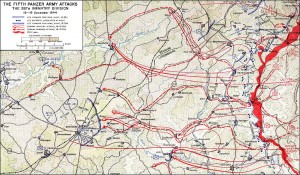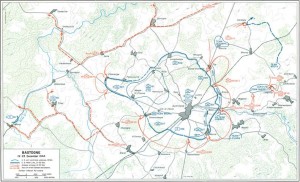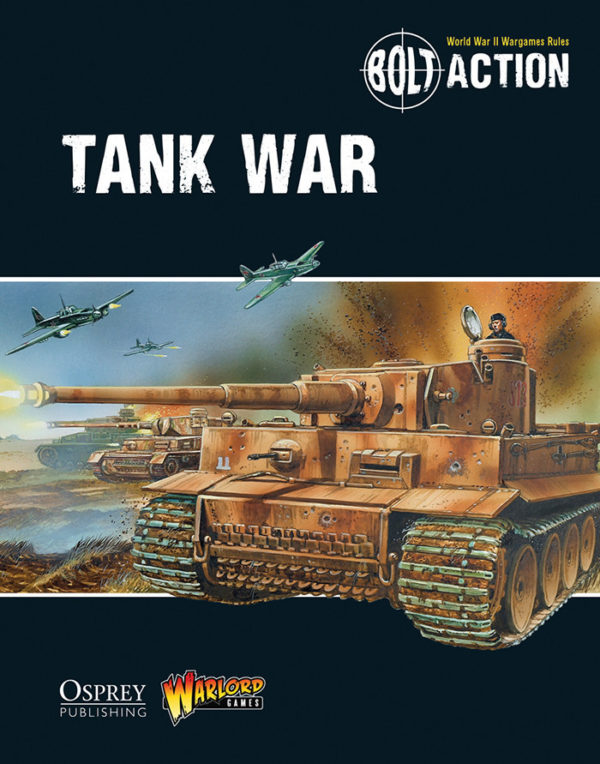Jacob Bebbington has been delving into the mud and snow of the Ardennes as he explores the background to one of the most famous and bitterly fought battles of the western front in 1944.
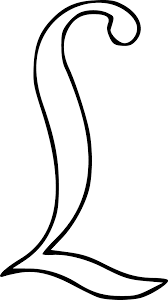
Panzer Lehr, also known as the 130th Panzer Lehr Division, was possibly one of the most lavishly equipped elite units in the German army.
The Panzer Lehr was formed in 1943 in the Brandenburg area before being moved to Verdun to be completed. It was composed primarily of veterans whom had seen action in North Africa and on the Eastern Front, meaning that it was considered an elite unit and was subsequently fully equipped with a mix of Panzer IVs, the newer Panthers, Puma armoured cars and (uncommonly) halftracks for both Panzer Grenadier regiments.
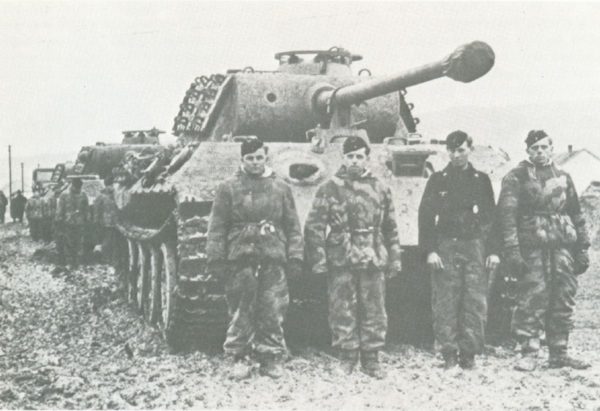
Panzer Lehr initially saw action in Normandy where, as part of Army Group West’s strategic reserves, it was deployed to counter the Allied landings. It succeeded in halting the initial British advance and was involved in the fighting for Hill 112, a set battle on the outskirts of Caen.
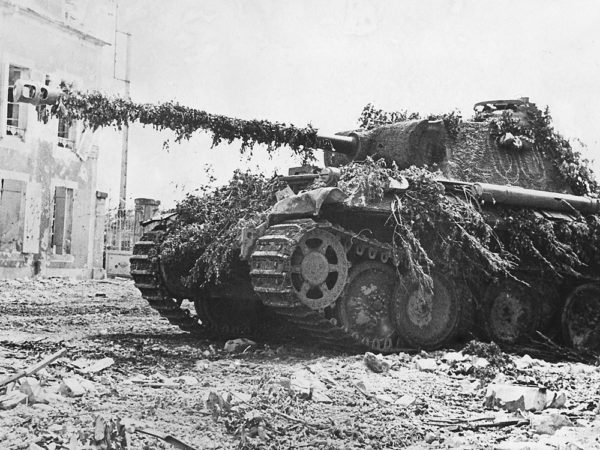
Despite suffering heavy losses from allied air attacks Panzer Lehr was to continue to put up a stubborn resistance to the allies until, on the 11th of July, it was ordered to attack the village of Le Desert. Fighting through the fields and Bocage the division suffered heavy casualties from American M10s and ground attack aircraft, eventually withdrawing after losing 20 tanks – a number which resource stretched Germany could ill afford. After putting up a stubborn defence and suffering heavily for it Panzer Lehr was withdrawn on the 5th of August to Alencon at only a fraction of its starting strength – twenty barely operational tanks, a company of Grenadiers, a company of Pioneers, six field guns and a recon platoon with a mere 200 men in reserve and by September it had even less. The company was recalled to Germany for refitting.
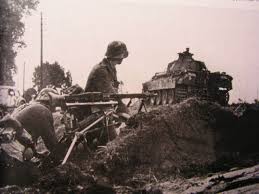
December 1944
By the December of 1944, and despite all the resupply efforts, Panzer Lehr was still under strength although this did not stop it from being deployed for the Ardennes offensive. Able to muster just 57 tanks (27 Panzer IV’s and 30 Panther’s) it is surprising that Panzer Lehr still existed as an independent unit, let alone be considered combat ready.
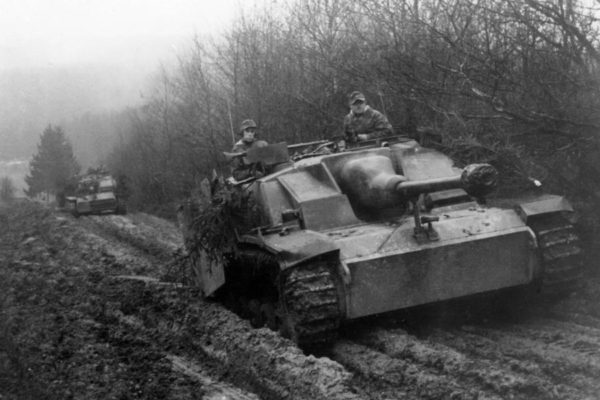
In an effort to make up the numbers Panzer Lehr was issued with a number of Tank Destroyers, sources stating around 21 (most likely the majority being the ubiquitous Stug III G), bringing its total strength to 78 AFVs.
The Battle
Things initially started well for the Panzer division on the 16th December 1944, with their supporting infantry managing to clear the initial route. However this luck was not to hold out and Panzer Lehr soon found itself facing stiff resistance along the road to Wiltz, with the American units putting up a heavy resistance which only intensified as they approached the town of Hosingen, and eventually becoming bogged down in fighting until the 18th of December when the way was finally cleared.
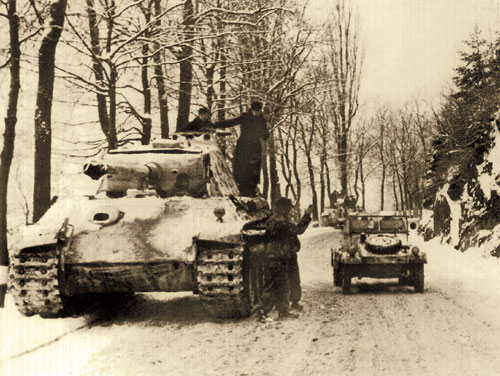
Panzer Lehr pushed on through this temporary lull and managed to open up the routes to Wiltz and Bastogne (the key crossroads town for the German attack, depicted on TV in Band of Brothers and the 1965 film ‘Battle of the Bulge’) but was not able to advance as rapidly as expected owing to the horse drawn transports of the 26th Volksgrenadier whom had become intermingled with the panzers.
Things where not to last though and the next day, the 19th, the panzers hit a roadblock constructed by troops of the US 10th Armoured Division. Despite smashing through this, and forcing the Americans to withdraw, the unit was unable to proceed directly to Bastogne as support was required for the 26th Volksgrenadier whom had encountered stiff resistance at the town of Mageret. The situation was further compounded when reports came in of a column of American tanks operating within the area which were further backed up by the sounds of battle coming from the distance (actually a clash between the US 9th Armoured and the 2nd SS Panzer Divisions).
The decision was made to halt and wait until the situation was clearer and the division set up a roadblock to halt enemy vehicles attempting to counter attack. In doing so Panzer Lehr had allowed the route to Bastogne to be closed to any advance, by the time they were to resume the attack American troops of the 101st airborne had secured the town, the rumoured column of Sherman’s was actually a pair of stray tanks.
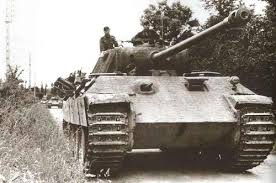
At this point the Division split into 2 kampfgruppe with a small number of their tanks moving to aid the 26th with their attempt to capture Bastogne whilst the rest continued on to Meuse. The portion sent to aid the 26th would be committed to a series of futile attacks on Bastogne which would ultimately bear little fruit. In the meantime the rest of the Division sped onwards and managed to capture an American convoy before eventually being brought to a halt by enemy forces at St Hubert. After a period of fighting just south of Bastogne Panzer Lehr was ordered to join up with the 116th and 2nd Panzer Divisions on the 21st December and sent to attack Dinant.
The 22nd of December saw Panzer Lehr speeding down the St Hubert road as part of the combined Panzer force, storming and taking the town along the way before taking off once more and racing towards Rochefort and then Dinant. Things seemed to finally be going well and the troops could have been forgiven for thinking so but the little ray of hope was soon swept away. The first German units to reach Rochefort, the 902nd Panzergrenadier Regiment, were met with a volley of gunfire and the rapid advance, so similar to that of the Blitzkrieg those few years ago, ground to a halt as the Americans put up a stubborn defence. Eventually, after a days’ worth of fighting the Americans withdrew having taken relatively few casualties allowing the advance to continue on the 23rd.
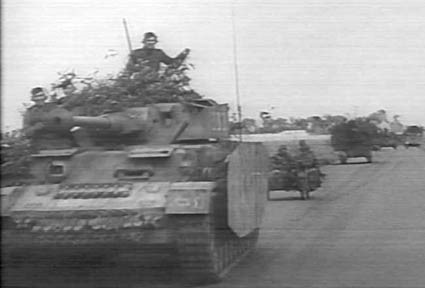
However this delay had given the Americans time to reorganise and on the 25th the combined might of the now depleted three Panzer Division were met by the Americans 7th Corps along the flood plains of the Meuse. By now it was clear that the Ardennes offensive was faltering and the final nail in the coffin was to come from nature herself – the clouds, mist and bad weather which had been preventing the Allies from bringing their air superiority into play finally lifted and the offensive petered out. The German armour was hammered from the ground and pounded from the air, the 2nd Panzer Division was cut off and surrounded and Panzer Lehr’s brief attempt to rescue them failed with heavy losses.
The end of the fight
After coming so far, after reaching sniping distance of their objective, the German forces where driven back, retreating under the cover of nightfall.
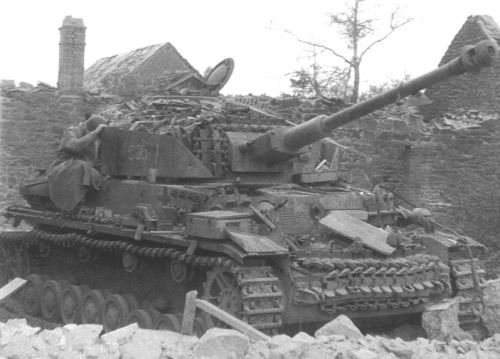
Exhausted and depleted, what little remained of Panzer Lehr was tasked with defending the approach to Bastogne long enough to allow German forces to capture it. Lacking the numbers and supplies needed they were to prove nothing more than a road bump to the advancing 4th Armoured Division who broke straight through them. Finally the 130th Panzer Lehr Division walked out of the Bulge, a mere shadow of the once mighty force it had been a mere four months ago when the Allies had stormed Normandy.
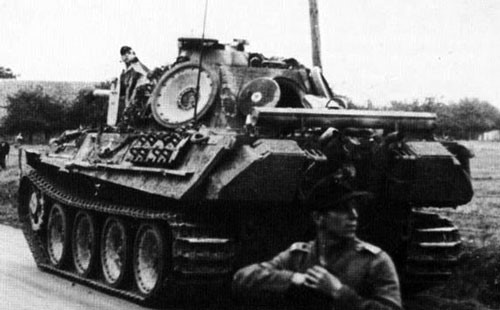
This was not to be the end of the story of Lehr and the Division would go on to fight until the end of the war, but it never recovered from the losses it suffered in the Ardennes. Germany simply lacked the experienced men and the material to bring this once great unit back. Ultimately the Battle of the Bulge can be considered the battle which truly broke Panzer Lehr.
Do you have an article within you? Are you itching to show your collection to the world of Bolt Action? Then drop us a line with a couple of pictures to info@warlordgames.com
Consider your next moves in Tank War as you battle for Bastogne (scenario page 60-62):

